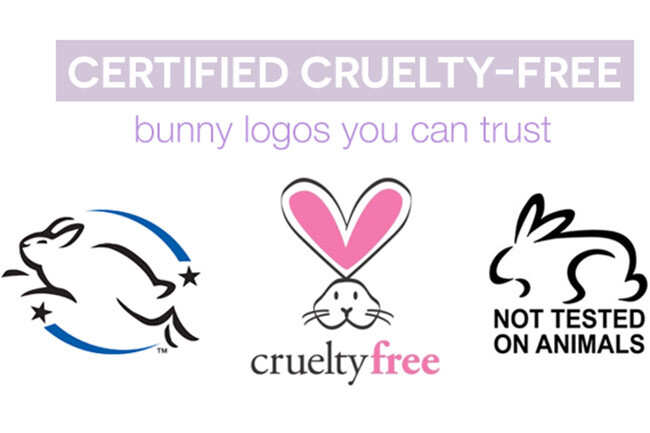In recent years, the phrase “cruelty-free” has surged in popularity within the beauty and personal care industry. It evokes a sense of ethical consumerism and a commitment to animal rights. However, as consumers increasingly desire products that do not involve animal testing, a profound question emerges: Are cruelty-free products genuinely devoid of animal testing, or is this label merely a marketing gimmick?
To delve into this query, we must first comprehend what “cruelty-free” entails. Typically, a product designated as cruelty-free signifies that neither the final product nor its ingredients have been tested on animals. However, variations in definitions and certifications among brands necessitate scrutiny. Some brands offer certifications from well-respected organizations that have established stringent standards, while others may self-declare their cruelty-free status without independent verification. This discrepancy creates a convoluted landscape for consumers seeking to make informed decisions.
Consider the various regulatory landscapes across the globe. Different countries enforce distinct laws regarding animal testing in cosmetics. For instance, the European Union has implemented a comprehensive ban on animal testing for cosmetics, whereas countries like China have historically mandated animal testing for imported cosmetics. Thus, a brand might promote itself as cruelty-free in one region while still complying with testing regulations in another. This poses a challenge for consumers: How can we trust labels when the definitions and requirements can differ so significantly?
Let’s explore the distinction between “cruelty-free” and “vegan.” While cruelty-free products avoid animal testing, vegan products preclude all animal-derived ingredients. A product can be cruelty-free but not vegan, as it may contain honey, beeswax, or other animal-derived components. Conversely, some vegan products may not be certified cruelty-free if there is a lack of transparency in their testing processes. This overlapping relationship underscores the complexity of ethical labeling in the beauty sector.
Some brands have taken commendable steps toward transparency, offering consumers confidence that their products are not tested on animals. Brands such as those listed in various cruelty-free certifications and organizations advocate for non-animal testing methods, including in vitro testing and computer modeling. These alternative testing methods are innovatively designed to reduce reliance on animal subjects while still ensuring product safety. Nonetheless, the challenge persists: New developments and regulations frequently evolve, necessitating that consumers continually educate themselves about which brands uphold genuine ethical practices.
Next, there is the intricate realm of supply chains. Many cruelty-free brands source their ingredients from suppliers who may not share the same ethical commitments. An ingredient could be cruelty-free in one context but tested on animals elsewhere in its production chain. This potential disconnect can leave conscientious consumers feeling bewildered and uncertain regarding their purchases. As responsible individuals, it becomes imperative to scrutinize not only the final product but also the entire supply chain associated with the components that comprise it.
Another dimension to consider is the pricing of cruelty-free products. Unfortunately, high-quality cruelty-free alternatives can often be cost-prohibitive for many consumers. This disparity can lead some individuals to overlook ethical considerations in pursuit of affordability. Thus, the question arises: Should affordability take precedence over ethical practices? This moral dilemma is particularly pronounced when one examines the growing desire for inclusivity within the beauty industry. The aspiration to make cruelty-free products accessible to all must coalesce with continued advocacy against animal cruelty.
Moreover, the need for ethical considering raises a broader question: How do consumers wield their purchasing power to influence change? By choosing to support cruelty-free brands, consumers send a clear signal of demand for ethical products and practices. Petitions, social media campaigns, and awareness initiatives are vital in elevating the conversation surrounding cruelty-free practices. Activism takes myriad forms, and consumer behavior plays a crucial role in effecting change in corporate policies regarding animal testing.
However, even amidst this growing commitment to cruelty-free practices, skepticism is a healthy mindset. Consumers often wonder if these brands genuinely reflect a commitment to animal welfare or if their dedication is superficial and driven primarily by marketing trends. As a response, consumers are encouraged to research brands thoroughly—review company policies, certifications, and independent advocacy groups that assess brands against stringent cruelty-free benchmarks.
As we reflect upon the diversity of information available, it is essential to acknowledge the responsibility each individual holds when it comes to ethical consumerism. The allure of ‘cruelty-free’ may be persuasive, but our commitment to animal welfare must transcend mere labels. Navigating the complexities of the cosmetic industry necessitates vigilance and an active effort to ensure that purchases align with personal values and ethics.
So, are cruelty-free products genuinely free from animal testing? The answer is nuanced; it is both “yes” and “no,” depending on the brand, region, and individual consumers’ efforts to remain informed. This complexity invites potential challenges and open questions about ethical purchasing: How can consumers cultivate a deeper awareness and understanding of the brands they choose to support? What role can education and advocacy play in ensuring that the cruelty-free movement continues to grow in integrity and scope?
In conclusion, navigating the world of cruelty-free beauty products demands discerning insight and conscious decision-making. The empowering choice to support cruelty-free brands paves the way for a more compassionate industry, championing ethical standards that protect vulnerable beings. As consumers, the challenge lies within our hands—every purchase can either reinforce or dismantle an industry reliant on animal testing. It is time to consciously engage with our choices, ensuring that the products we love reflect a world we aspire to create: one free from cruelty.






